Did you know that you can find over 100 mammal species on land and in the waters around the UK? Mammals are warm blooded animals that have back bones, mammary glands and fur or hair. Most mammals give birth to live young but there are a few exceptions like the duck-billed platypus that lay eggs. UK mammals include badgers, beavers, deer, foxes, hares, hedgehogs, mice, moles, otters, pine martins. rabbits, rats, shrews, squirrels, stoats, voles, weasels, wild boar, wild cats, seals, dolphins and whales.

The UK is also home to 18 species of Bats which are the only mammals capable of flying with wings. Bats play a vital role in the environment pollinating plants, dispersing the seeds of plants and trees via droppings and controlling pest populations of insects like mosquitos and locusts. A bats diet varies depending on its species, although many species feed on insects some species feed on bigger prey like frogs, fish and lizards. Some species feed entirely on seeds, berries, fruit or pollen and an incredible 500 species of plant rely on bats to pollinate them.

Bats, hedgehogs, foxes and badgers are mostly nocturnal, which means they sleep throughout the day and are active and awake during the night. Other mammals like deer, horses and cows are diurnal which means they are active during daylight hours. Some mammals like rabbits are crepuscular which means they are more active during twilight hours at dawn and dusk, this is because the changing light makes it hard for predators eyesight to focus on them as prey.
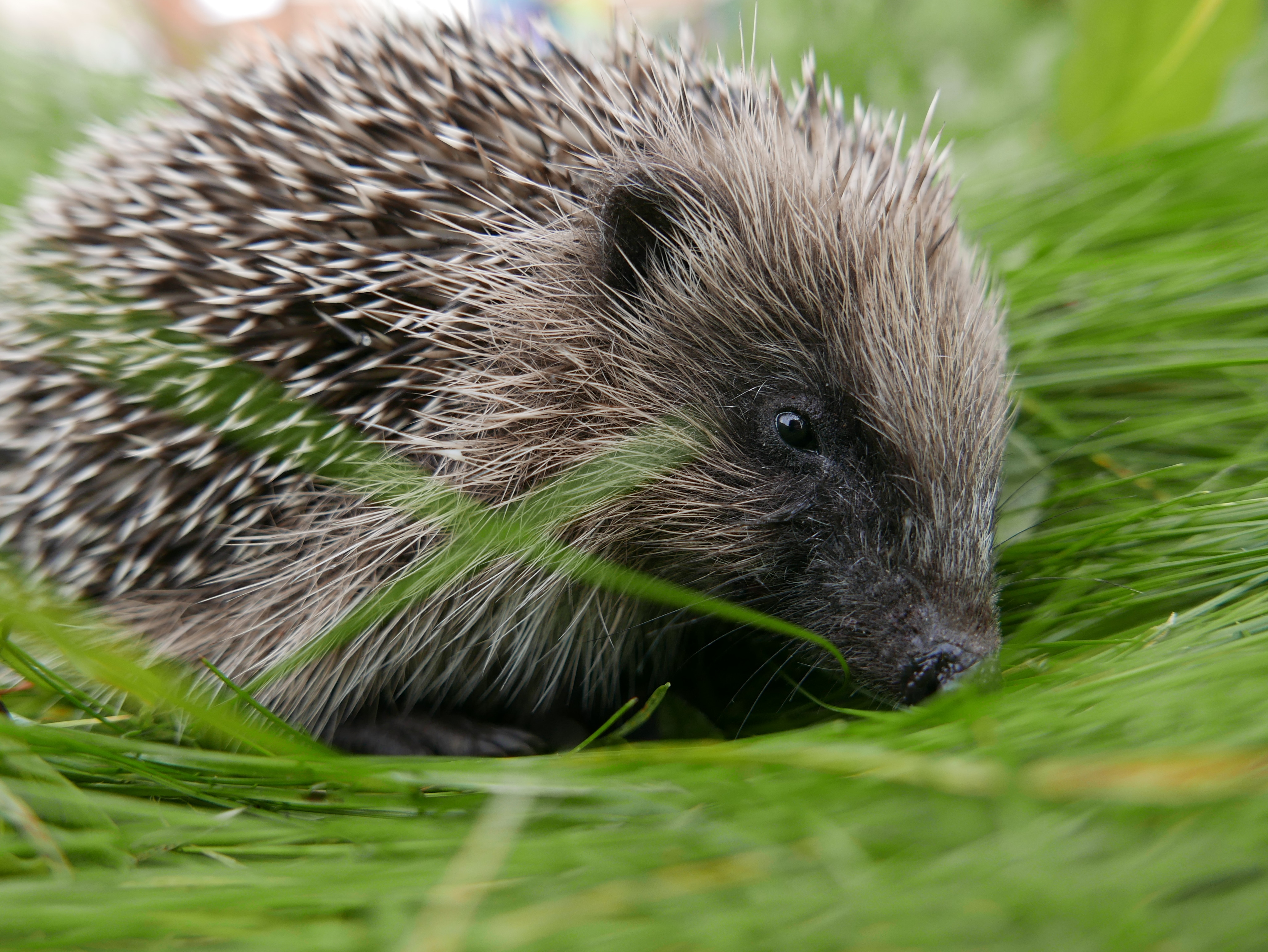
Unfortunately many species of British mammals are currently endangered and threatened with extinction due to habitat loss, hunting, pollution, climate change, car collisions and the extensive use of pesticides. Hedgehog numbers in particular have dropped a devastating 90% in the last 50 years from an estimated 36 million to just 1 million. Shockingly over a quarter of all the native mammals in the UK are now listed as at risk of extinction!

There are so many simple things you can do to help wildlife, from making your garden more wildlife friendly, to litter picking, getting involved in conservation and citizen science*, going plastic and pesticide free, volunteering at local nature reserves, supporting wildlife charities and donating and petitioning on behalf of environmental causes. But the most important thing you can do is connect with nature around you and encourage others to join in with you. We protect the things we care about, and in order to get society to care about nature and wildlife we first have to get them to engage with it.

You can find lots of fun and easy educational ideas below for all ages to help you explore and learn more about these beautiful animals. From science and sensory to arts and crafts.
1. Take part in a mammal survey
Mammal surveys are quick and easy to do for all ages and you don’t need anything other than observant eyes and an outdoors space to explore and survey. You can often spot signs of mammal activity if you know what to look for. The further activities below give you lots easy ways and guidance on how to find and identify mammal signs, tracks and homes.

If you want you could take a notepad or camera with you to record your finds or print out photos or guides to identifying mammal signs and tracks. You can then record your mammal sightings on national databases like Nature’s Calendar or iRecord or submit findings to your own local wildlife, environmental science or natural history groups. You can also take part in national surveys like the Peoples Trust for Endangered Species Living with Mammals Survey or their Mammals on the Road Survey here.

*Citizen science is when members of the public work together to gather (or analyse) data that helps with scientific understanding or research. It’s a great way to help with conservation by expanding knowledge and understanding of the wildlife in your local areas. You might be surprised to find even the most urban spaces are teeming with wildlife when you take the time to look closely.
2. Provide water for wildlife
It is so simple, easy and yet so vitally important to provide fresh clean drinking water for mammals and other wildlife during hot spells, long dry periods or during freezing cold weather. You can do this by placing bowls of water out in safe but easy to access places for them. Don’t forget to then to clean the bowls and change the water regularly to make sure it doesn’t get dirty or go foul.

3. Create a Hedgehog highway
Hedgehogs generally have poor eyesight so they use highly developed senses of smell, touch and hearing to navigate and explore and find food with. They spend a lot of their time searching for food and they have to eat as much as they can to build up the layers of body fat they need to keep them warm when they hibernate over the winter. This means they need to travel as far and wide as possible in search of food. Unfortunately our garden fences and walls create barriers that prevent Hedgehogs from foraging for the food they so desperately need.

You can help them out by creating access point to gardens through fences and walls. A 13cm by 13cm hole is normally big enough for a hedgehog to squeeze through whilst being too small for most domestic pets to get through. You can create Hedgehog friendly access point by removing bricks from walls, cutting holes into fences or digging holes under fences and walls. You can also add your Hedgehog hole to the Hedgehog Highway map here and make a sign to let passers and by or neighbors know you are giving hedgehogs a helping hand.
4. Make a home for wildlife
As wildlife habitats are in decline it’s more important than ever to make space for wildlife in our gardens or around our homes. One of the simplest things you can do to help mammals is let areas of grass grow long and wild in your garden. Long grass provides shelter and food to a whole host of wildlife.

Leaving piles of branches, leaves, dead wood and cut grass along the edges of the garden also provides areas of shelters for mammals and is a great way to increase the diversity of wildlife in your garden. Many insects benefit from having shelter and feeding on decaying wood and leaves and a healthy population of insects will also provide a ready source of food for other wildlife such as hedgehogs, frogs, toads, slow worms, bats and birds.
5. Look for paw prints
You can often find animal pawprints in muddy areas or after fresh snow. The best places to look are in areas right by water like rivers, lakes, ponds and streams where animals go to drink and walk through soft mud. The Wildlife Trust have a useful photo guide to identifying animal tracks here which you can use to help identify any prints you might find.

6. Make a paw print plaster casts and clay impressions
You can easily take a cast of any animal prints you find to enjoy and explore at home. All you need for this activity is some Plaster of Paris, water, a cup or mixing bowl and a spoon. Simply mix the plaster with water in the cup or bowl and then pour it onto the animal print. You could also make a simply cardboard collar or hoop to place over the print and contain the plaster but this isn’t essential. You then need to wait patiently for 30 minutes to an hour for the plaster to dry before carefully removing the cast of the print.

You can then use your plaster cast paw prints as stampers to make impressions and prints into clay, salt dough or playdough. Once your prints have dried you can paint and decorate them or turn them into pendants or decorations.

7. Make a small mammal foot print tracker
It is simple and easy to turn an old kitchen roll tube into a small animal print tracker. All you need is paper, 3 bits of sticky tape, non toxic paint, cooking oil and some peanut butter. First cut the paper into a strip so that its the same length and width as the kitchen roll tube. Next place a strip of tape at each end of the paper and a piece in the middle.

Next place a blob of peanut butter on the middle strip as bait to tempt the small mammal into the tube. Next mix some non toxic paint with cooking oil and paint the two tape strips. The cooking oil will stop the paint drying out too quickly. Now carefully place the paper strip in the kitchen roll tube and find a safe place to hide it outside.

You want to put it on the ground in a sheltered place like a bush so it doesn’t blow around, you could use stones on either side to hold it in place. Leave your mammal tracker out overnight and check on it first thing in the morning. When a small animal walks through the tube they will tread in the paint and track foot prints across the paper strip.
The three mammals you are most likely to get leaving tracks in your tube are mice, voles (pictured below) and shrews. The Woodland Trust have a great photo guide to the differences between these three wonderful little creatures here. Make sure to wash your hands thoroughly with antibacterial wash after handling a used mouse tracker and dispose of it carefully.

Did you know that Harvest mice are the only British mammals to have a prehensile tail which they use for climbing grass stems and vegetation. They are the smallest rodents in Europe and eat mainly grass seeds, fruit, berries grain and the occasional insect. They build grass nests throughout the year and are mostly nocturnal although they can be active in the day during the warmer summer months.
8. Make a large mammal print tracker
You can also make a larger mammal print tracker to capture hedgehog or other mammal paw prints. For this you will need a large piece of recycled cardboard or poster board, paper, non toxic paint, cooking oil and hedgehog or small cat biscuits. First fold the cardboard into a triangular tube and tape the sides together to form a tunnel. Next cut a length of cardboard to fit the bottom of the tunnel and tape some paper across the middle of the panel making sure to leave each end uncovered.

Place the hedgehog or cat biscuits in the middles of the panel as bait to tempt a mammal into the tube. Then mix some non toxic paint with cooking oil and paint either end of the panel. The cooking oil will stop the paint drying out too quickly. Then place your tracker on the ground in a sheltered place like a bush so it doesn’t blow around, you could use stones on either side to hold it in place. Leave your mammal tracker out overnight and check on it first thing in the morning. When an animal walks through the tube they will tread in the paint and track foot prints across the paper strip. The Wildlife Trust have a useful photo guide to identifying animal tracks here which you can use to help identify any prints you might find.

8. Spot signs of animal homes like dens and burrows
You can often spot the tell tale signs to burrows or dens by the loose earth around holes dug into the earth. Rabbit burrows often have many exits and droppings near by. This is also a good place to look for tracks and and any stray bits of fur caught on bushes, roots or branches near or around the entrances.

Mole hills are also another easy to spot burrow sign as they are formed by soil pushed up by small burrowing animals like moles, mole-rats and voles. They often appear in a line along the route of the burrow which you can follow.

10. Make a pretend animal home
How about making your own animal home. You could use toy animals and challenge children to make homes for them using leaves and sticks or by digging them a shallow hole if they live underground. It’s a great opportunity to talk about the different places and environments in which the animals live and what kind of shelter they might need in the winter. Do they need to hide from predators, or are they predators themselves? You could also talk about what they like to eat and make them an imaginary feast.

11. Look for animal remains
Animals often leave remnants of food which you can spot. Small mammals may leave nibbled and cracked nut shells and half eaten fruit or food. Where as larger predators will leave behind the remains* of other animals in the form of bones, fur, feathers, skulls, teeth and even broken eggshells. Occasionally you may even find the body parts of a predator that has passed away like the amazing fox skull below.

*Please don’t touch or handle animal remains unless you have proper gloves and know what you are doing. Animal remains can harbour pathogens like bacteria and viruses. It’s best to observe them safely by telling children not to touch them or get too close.

Did you know that Foxes live on every continent except Antarctica? Sub species of foxes have evolved to survive in very different environments from the Artic foxes in the coldest regions to the Feenec Foxes living in the North African Desserts, Foxes are members of the dog family (Canidae) but they have vertical pupils like cats which help them see at night and Grey foxes are also able to retract their claws like cats. They also have whiskers on their legs and face, which help them navigate. A group of foxes is called a “skulk” or a “leash” and a fox’s home is called a “den. The average lifespan of a wild fox is 3 years but they can live up to 10.
12. Go on a poo hunt
A slightly gross but also surprisingly easy way to track mammals is via their poo*. Many species leave very distinctive droppings that you can identify using the Wildlife Trusts handy photo guide here. Once you feel confident identifying droppings you can also have a little fun trying their Poo Dunnit quiz here.
*Please don’t touch or handle poo or droppings as they can harbour pathogens like bacteria and viruses. It’s best to observe them safely by telling children not to touch them or get too close.

The poo above belongs to a Roe deer and the poo below was left in our garden by a hedgehog. Hedgehogs mostly eat invertebrates, worms, slugs, snails and insects but they have been known to also eat carrion, mice, eggs and even snakes. There are 17 species of hedgehog across the world but the most common one in the UK is the European Hedgehog.

They eat as much as they can at night, especially when they are fattening up to hibernate for the winter. You can help out any hedgehogs and other wildlife you might have in your garden in your garden by leaving out dishes of water in hot weather and making holes in and under fences to allow them to travel through to find food and shelter.
13. Make a sand print tracker
To make a sand print tracker you simply need to lay a thin layer of damp sand across a flat surface like a path or patio. Smooth the surface of the sand and leave overnight. In the morning you can check to see if any animals have left tracks in the sand. The only downside to sand print trackers is that some wildlife (like cats) may mistake it for a litter tray. So just be aware of that if you decide to make one. Again the Wildlife Trust have a useful photo guide to identifying animal tracks here which you can use to help identify any prints you might find.

14. Make potato mammal prints
Potato printing is a simple activity for children of ages, all you need is a potato cut in half, a bit of inspiration and some paint to get started. How about using the potato prints to make patterns, pictures, cards and even recyclable wrapping paper. It is also fun to experiment printing on different types of surfaces and textures from paper to fabric, foil and wood. And as long as you use non toxic paint you can even print on outdoor surfaces like paths, trees and leaves.
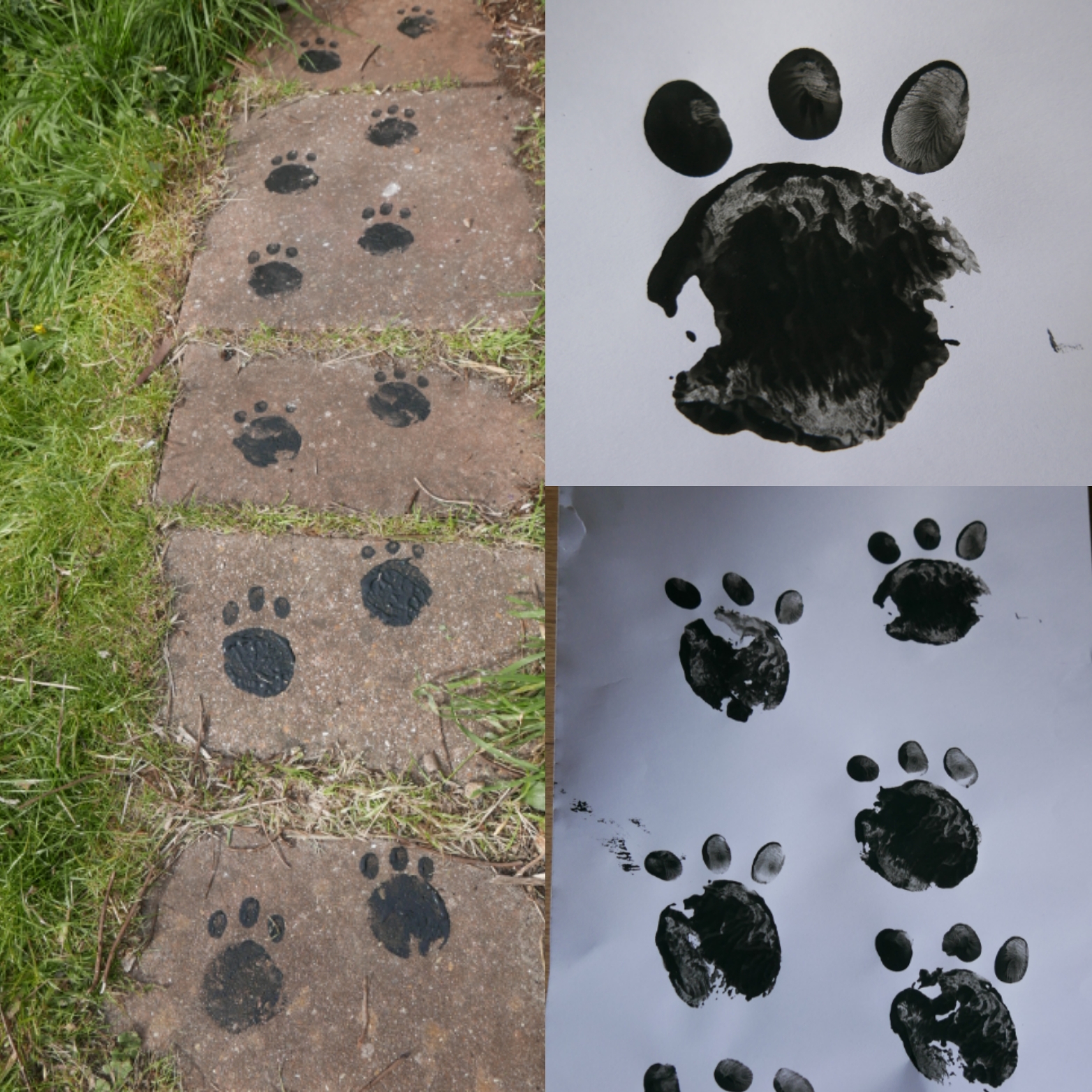
You can make your potato prints as simple or detailed as you like. You could just cut a potato in half and use it to print paw prints or a round body shapes and then stick, paint or draw on extra animal details. Or you could cut a detailed shapes directly into a potato half to make a more detailed stamp.

15. Make a cardboard tube mammals
We hate to waste anything and recycling and reusing materials is one of many small things we can all do to help the environment. So instead of chucking used cardboard tubes we like to find ways to use them in crafts and activities. To make cardboard tube mammals you just need an old cardboard tube, paint and some inspiration or imagination.

To start cut your the cardboard tubes into halves (or quarters for old wrapping paper tubes). Paint the tubes to match the colour of each animal you wish to make. Then you can either cut out or stick on the animals ears and add further details like eyes, arms, wings, antlers ect by sticking, painting or drawing them onto the cardboard tube. When you have finished you can use your cardboard tube animals as decorations, story props, napkin rings or even fill them with sweets or presents to give as gifts.

16. Look for wildlife at night
Just as the rest of the world is going to bed the creatures of the night begin to emerge. This is a wonderful time to observe and discover a hidden world of wildlife you normally never see. The world is alive with at night with busy nocturnal creatures from bats and owls to hedgehogs, foxes and badgers. All you need is a torch, warm sensible clothing and a safe space to explore. We also like to have hot chocolate and a blanket with us to warm up with if it gets too chilly.
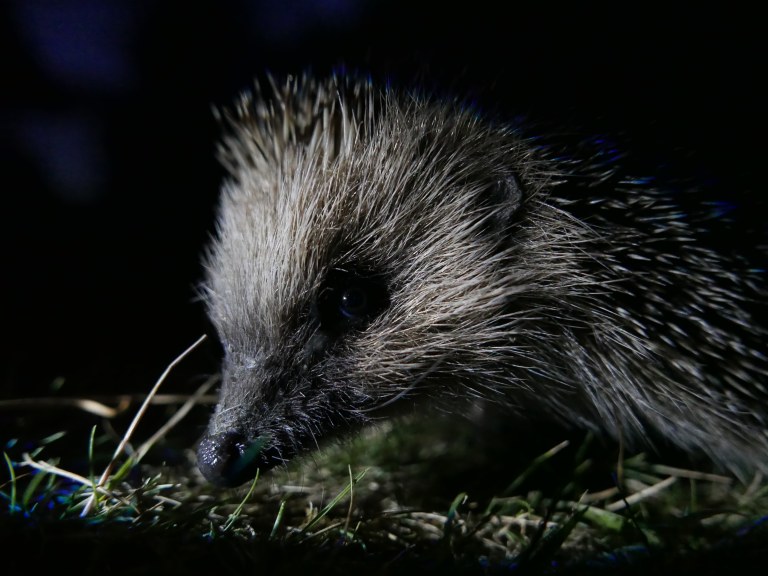
As the sun and the temperature lowers you may get to see bats that are just emerging from their roosting spots on trees and houses flitting, diving and darting about to to catch insects. You may often spot pipistrelle bats near water catching insects hovering over the surfaces of ponds, rivers, streams and lakes. The Bat Conservation Trust have a great guide to identifying UK bats here. Safety note: please remember that children should be supervised at all times around open water. Please also be aware of the health and safety rules and restrictions of any area you visit.
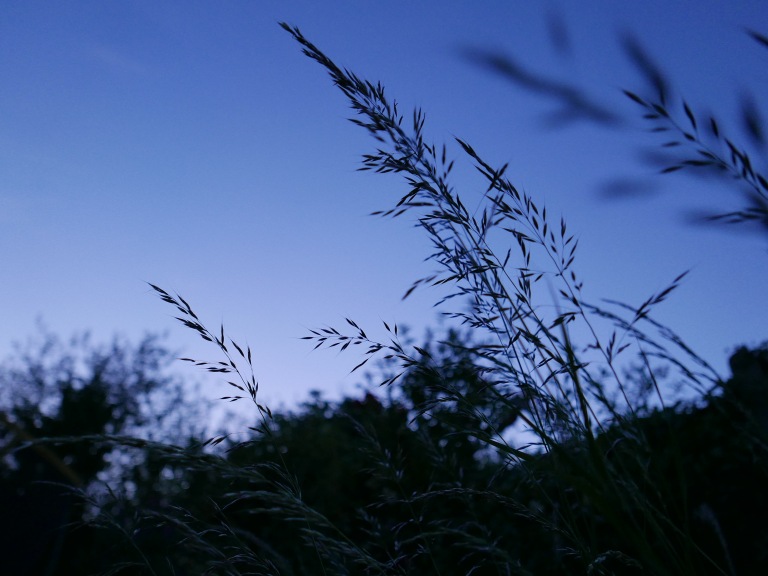
17. Listen out for bats using a bat detector.
Bats use echolocation to find their prey (which is mostly insects) and navigate in the dark. Echolocation is when a Bats makes a high pitched noise (that is beyond our range of hearing) the sound waves can then echo and bounce off objects and back to the bats ear. They can tell the distance of various objects by how quickly the sound waves bounce back to them. Smaller bats mostly rely on echolocation to find their way around but bigger species of bats can also use their eye sight which is better than a humans. You can use a bat detector to detect the high frequency echolocation sounds the bats make and even identify the bat species based on the frequency of the call.

18. Make a bat bog garden or put up a bat roosting box
As wildlife habitats are in decline it’s more important than ever to make space for wildlife in our gardens or around our homes and local areas. You can help bats by providing night scented plants that attract pollinating insects like moths, putting up bat roosting boxes or by creating a bog garden which creates the perfect habitat for insects bats like to eat. You either create a bat bog garden using planters or by creating a boggy area directly in the garden. The RSPB have a great guide to building bat boxes here.

To make a boggy garden or planter you will need to line the base of the planter or a dig a wide large hole in the garden and then line it with an old paddling pool or a plastic liner for a pond. Make sure the lining has a few tiny holes for drainage. Make sure the lining has a few tiny holes for drainage. The idea is to retain moisture and create damp boggy ground but not let it become over flooded. Next cover the liner with soil and water it with rainwater to make it nice and damp. Finally plant some marshy plants like Marsh-marigold, Yellow Iris, Creeping Jenny, Meadowsweet, Snake’s-head-fritillary, Plaintain Lily, Water Avons or Hemp-agrimony.
19. Learn about the food chain
You can learn about the role mammals play in food chain by drawing a simple food pyramid. Food pyramids start with the primary producers at the bottom, they tend to be photosynthetic organisms like plants, trees and grasses. Next come the primary consumers, the animals that feed on the primary producers for example rabbits and squirrels, next come the secondary consumers or intermediate predators like snakes and weasels, and finally there are the tertiary consumers or the apex predators like badgers and foxes which are at the top of the food chain.

Bats in particular are considered a bellwether or indicator species as they are the top most predator of nocturnal insects, so when insect species decline due to environmental factors it also affects bat populations. Scientists can monitor populations of indicator species in the food chain to pick up early warning signs of environmental changes or damage to natural habitats and ecosystems.
20. Nature characters
Nature characters are so simple and fun to make for children of all ages. They are also a great way to stimulate conversation and explore different textures, colours, shapes and patterns. Simply draw a mammal face or shape onto a piece of recycled cardboard and then cut it out. When you have cut out the faces and shapes you can take them on a woodland walk and place them by any interesting natural objects you find, to give your animals antlers, fur, feathers, spines, ears, legs or wings. You could use leaves, stones, grass, bark, twigs, fallen fruit, nuts and seeds and flowers. *But pretty please don’t pick any wild flowers, only collect ones you have grown yourself or fallen ones you find on the floor.
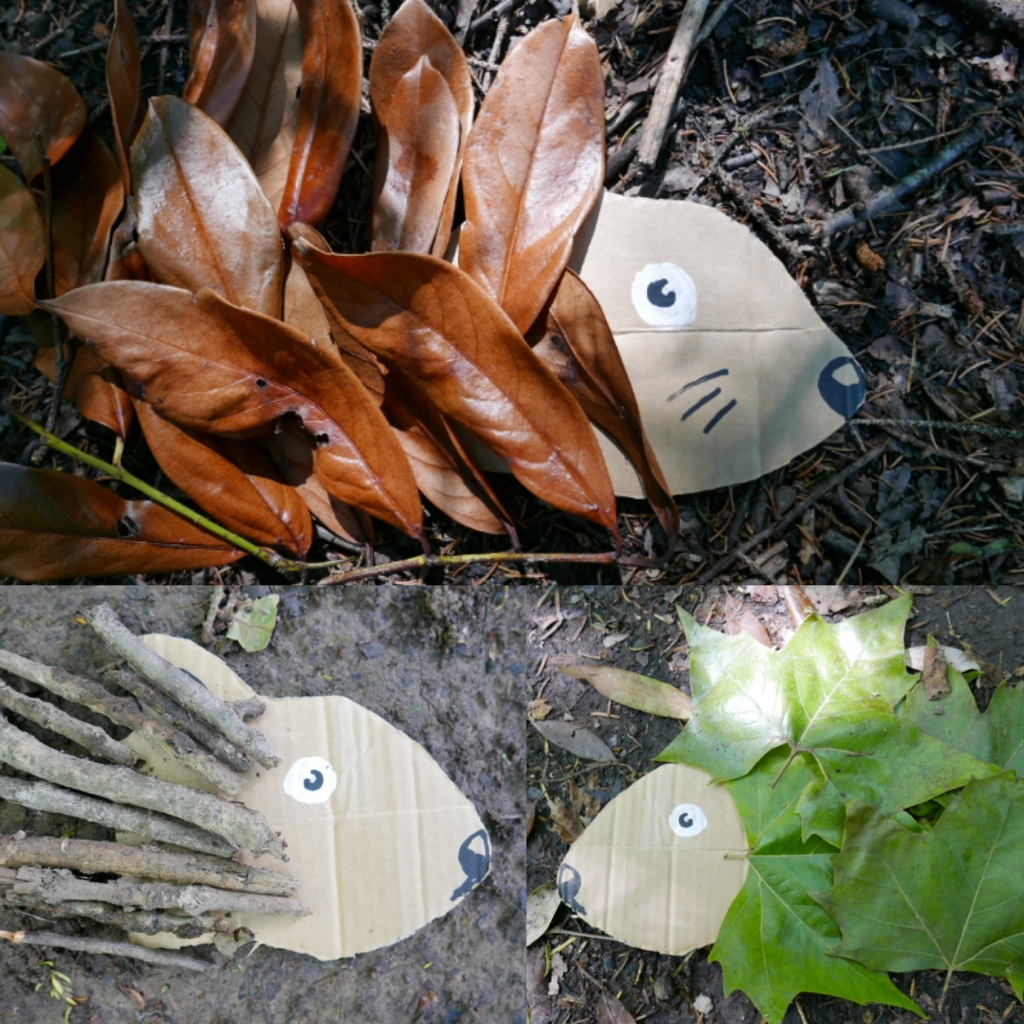
21. Log slice mammals
Log slices are simply slices of tree logs or branches. They can be any shape or size and they are a brilliant, tactile and fun resource to use in play. You can easily decorate your log slices with mammal pictures, faces or wings and then turn your log slices into pendants or decorations.

You just need to carefully drill a single hole through the slice so the children can thread some string, ribbon or wool through. If you have the tools and health and safety experience then you can help older children can cut and drill their own log slices. Or you can make them yourself or pre buy some.

22. Mammal nature art
Nature art is a great indoor or outdoor activity that encourages creativity and fine motor skills. It is also fun and engaging activity for children of all ages and abilities. Simply collect as many natural objects as you can find around you. You could use leaves, stones, grass, bark, fallen fruit and flowers. *But pretty please don’t pick any wild flowers, only collect ones you have grown yourself or fallen ones you find on the floor. Then arrange them into bat shapes.

On windy days it’s hard to make a picture before the lighter materials blow away. So you could always bring your leaves and found objects home to play with. You could also glue your finished pictures to some paper or take photos to print out so you can keep your art and enjoy it for longer.
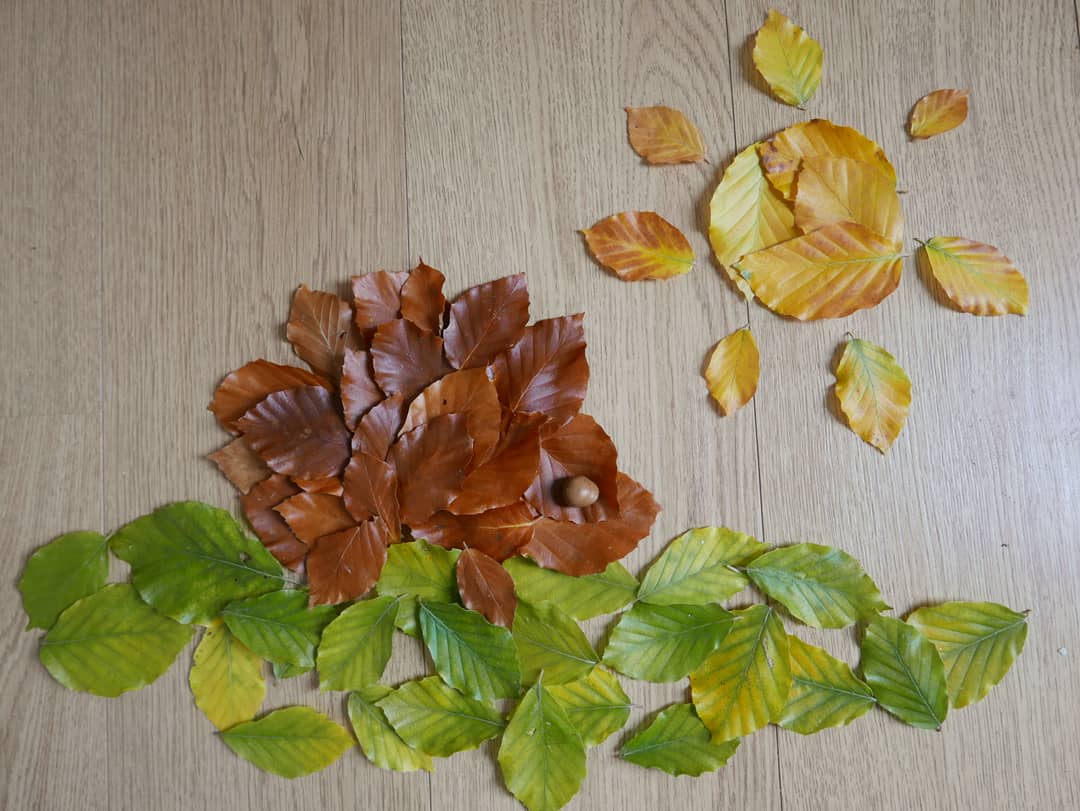
23. Grow a grass mammal
Or how about growing your own grass animal. Its a fun and easy activity to do, all you need is a pair of old tights, some compost and grass seeds. Simply cut the the foot end off of some tights, fill them with the compost and sprinkle in some grass seeds. Then tie up the top and cut off the loose end. Draw, paint or stick on some eyes, ears, arms or mouths for your animal. Then water your animal regularly and wait to see the first grass shoots emerging. Once your animal has a fine head of grass you could have fun practicing fine motor skills and role play giving your animal a haircut.

24. Mammal nature art frames
Nature art frames are really simple to make, fun to play with and create some wonderful images. You just need an old piece of cardboard a pen and some scissors. We hate to waste anything and recycling and reusing materials is one of many small things we can all do to help the environment. So instead of chucking used cardboard boxes we like to find ways to use them in crafts and activities.

All you need to make a nature frame is to draw a simple shape or picture like an animal onto cardboard. Your shape or picture should have at least 1- 2 easy to cut out sections that you can then look through. When you have cut out the see through sections of your frames, you can take them outside to hold them up against any of the interesting natural objects, textures, patterns and shapes you can see, like the sky, trees, flowers and grass for example.

The picture you see or create with the frames changes as you move the paper around. It s fun to see all the beautiful patterns, shapes and colours of nature bring your pictures to life. You could even take photos of the nature frames as you go to capture the artwork and pictures they create.
25. Make an Egg box mammal
A simple and easy to set up activity that helps develop fine motor skills. Simply draw, paint or stick an animal face onto the side of an egg box, then push sticks into the to make the fur, hair or spines. You can use natural sticks you find on a walk/in the garden or lollipop sticks. Sometimes it helps to make the holes by pushing a sharp pencil through the top first.

26. Seed animal figures
Tree seeds like pine cones, acorns, conker and sycamore seeds are great fun to collect on nature walks. You can easily turn them into cute little mammals by painting or sticking on ears, eyes, tails and other animal details. Pine cones make great little hedgehogs, otters and foxes and mice.

And sycamore seeds make fantastic little bats that you can throw and twirl through the air. Simply paint some sycamore seeds black or brown and then draw, stick or paint on some eyes. You can have fun using your seed animals in role playing games or as story props.

27. Clay mammal figures
Clay animal figures are tactile and engaging to make and encourage fine motor skills and creativity in children of all ages. All you need is some clay, playdough or salt dough to shape into the body of a mammal. Then you can give your mammal details by carefully pushing natural found materials like leaves, long grass, plant stems, bark or stones into the clay, playdough or salt dough. Alternatively you could also use materials you find in the house like, paper, cardboard, string, spaghetti, pasta or cut up packaging. Once your figures are finished you can leave the bodies to dry out before using them in role play, imaginative play or as story props. Just please be aware of the choking hazards of any materials you may use in relation to small children.

28. Pompom mammals
Pompom animals are really quick and simple to make. You can easily make your own pom poms from scratch or buy some ready made. Simply glue on animals details like, eyes, ears, tails, wings ectera and then you can then use ribbon or string to hang them up as decorations. They also make great story props and toys.

29. Paper plate mammals
A folded paper plate makes a great base for mammal faces, simply stick, draw or paint on the animals eyes, ears, nose and or tail and wings. Or you could cut the paper plate to form the animals shape. For example if you fold a paper plate in half you can then cut triangles into the edge of the plate to form the spines of a hedgehog.

30. Mammal nature weaving board
A piece of recycled cardboard also makes a great base for a threading and weaving nature hunt board. All you need to do is ask the children to draw or paint simple animal picture onto the cardboard. (Or you could do it for them if they are too little). Then carefully poke a pencil through the cardboard at different points to make holes for the children to poke, thread and weave found natural materials through. You could use leaves, long grass, plant stems, bark, fallen fruit, nuts, seeds and flowers*. *Pretty please don’t pick any wild flowers, only collect ones you have grown yourself or fallen ones you find on the floor.

- For day 1 of 30 days wild 2023 we explored a country park and woodland nature reserve looking for signs of mammals, we discovered freshly dug mole mounds and got to watch a mole digging and expanding its burrow. We also found rabbit and fox droppings and deer hoof prints in the mud. Afterwards we put out water for wildlife in our garden, created a mammal shelter out of branches and leaves and made a hole under the fence to create a Hedgehog highway.
* Special thanks to Vaughn Matthews for letting me use his fantastic bat on log photo for this post.
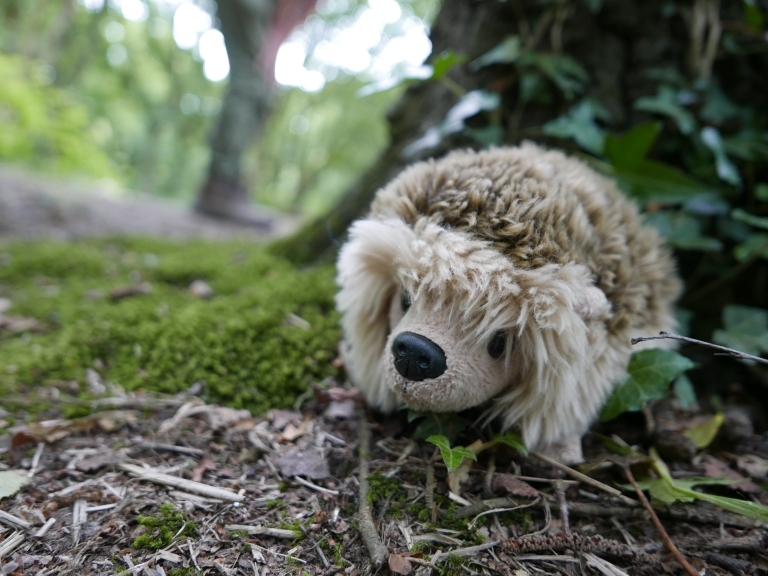
If you like this you might like to try:
Exploring trees and woods 30+ activity ideas

33 bird activity ideas + fun facts

20 ways to make a home for wildlife


15 thoughts on “30 Mammal activity ideas”